Introduction
India, a land steeped in history and culture, has always found art as one of the most expressive ways to tell its stories. Among the multitude of Indian art forms, Cheriyal Scroll Paintings stand out for their distinctive visual storytelling. Originating from the state of Telangana, these vibrant, hand-painted scrolls narrate ancient epics, local folklore, and moral tales. Cheriyal paintings are much more than colorful artworks; they serve as a gateway to understanding the past, customs, and myths of rural India.
Cheriyal Scroll Paintings hold a special place in Indian traditional art. These elongated scrolls, meticulously crafted and adorned with lively, expressive figures, have been passed down through generations of the Nakashi artist community. The paintings are primarily narrative in nature, deeply intertwined with the oral storytelling tradition that flourished in Indian villages for centuries. At a time when literacy was low, these scrolls were a visual guide, bringing stories to life with their vibrant hues and detailed depictions.
This art form traces its roots back to the Kakatiya dynasty in the 12th century, when the rulers of Telangana patronized various forms of art, including these scrolls. Over time, Cheriyal paintings have evolved, taking on influences from the various socio-religious movements in India, while retaining their traditional aesthetic. Today, they stand as one of the few surviving art forms that merge visual art with storytelling, providing a glimpse into the region’s rich heritage.
The Cultural Heritage of Cheriyal Scroll Paintings
Cheriyal Scroll Paintings are more than just artistic creations; they represent the cultural identity of the people of Telangana. These scrolls were traditionally used as visual aids in storytelling performances, where local storytellers, or kathakaras, would unravel long scrolls as they narrated stories from Hindu mythology, the Puranas, or local legends. Each section of the scroll represented a different scene or chapter, enabling the storyteller to hold the audience’s attention with colorful, detailed imagery.
What makes Cheriyal paintings stand apart is their distinctive style and the use of natural materials. The scrolls are typically made on khadi cloth, which is treated with a mixture of tamarind seed paste and rice starch to make it durable. This natural base is then layered with intricate figures and scenes using colors made from natural sources. For instance, red is a dominant color in Cheriyal art, often used as a background, derived from tamarind seeds. Blue, green, and yellow, representing various elements of nature, are extracted from minerals, herbs, and plant sources.
Historically, these scrolls were used in performances that served both entertainment and educational purposes. In villages, where books and written stories were rare, these visual tools made ancient stories accessible to common people, instilling moral values and cultural knowledge. In this sense, Cheriyal Scroll Paintings played a vital role in preserving and transmitting folklore, religious tales, and regional history through the ages.
Over time, Cheriyal Scroll Paintings have seen changes in both form and content. In earlier times, scrolls were long and could feature anywhere from 10 to 50 panels. These scrolls would narrate the entirety of a single story. However, with modern shifts in audience preferences and the decline of storytelling performances, the scrolls have become more compact, with artists focusing on individual scenes or smaller stories. This change has enabled the art form to adapt and survive, appealing to modern sensibilities while preserving its traditional roots.
An Epic Tale through Cheriyal Art
To fully appreciate the power of Cheriyal Scroll Paintings, imagine witnessing a traditional storytelling performance. In the rural heartlands of Telangana, a village crowd gathers around an old storyteller. His voice resonates with emotion as he begins the tale of the great Mahabharata, a story deeply rooted in Indian mythology.
As he unfurls a long scroll, the first panel reveals the birth of the Pandavas and the Kauravas, cousins who would eventually wage war over the throne of Hastinapur. The painting’s intricate details draw the crowd in, with bold colors bringing the characters to life. The audience watches intently as the second panel shows the infamous game of dice, where the Kauravas cheat the Pandavas out of their kingdom. The vibrant reds of Duryodhana’s attire contrast with the blues of the Pandavas, reflecting the tension and drama of the moment.
In the following panels, the scroll illustrates various key events, such as Draupadi’s humiliation, Lord Krishna’s teachings to Arjuna, and the eventual Kurukshetra war. Each panel is packed with emotional intensity, the figures’ faces painted with expressive features that convey fear, anger, sorrow, and hope. The villagers, although familiar with the tale, are captivated once again by the artist’s skill in bringing the story to life. The storyteller’s voice complements the artwork, adding depth and richness to the characters and the moral lessons embedded in the narrative.
In one particularly memorable panel, Lord Krishna is depicted in the iconic moment of the Bhagavad Gita, guiding Arjuna in the midst of the battlefield. Krishna’s serene expression contrasts with Arjuna’s confusion, the colors blending harmoniously to capture the divine and human conflict.
As the storyteller reaches the end of the scroll, the crowd erupts in applause. The art and the story have worked in unison, transporting them into the world of heroes, gods, and battles. This is the magic of Cheriyal Scroll Paintings—using art not merely to illustrate, but to engage, evoke emotion, and deepen understanding.
The Evolution and Modern Relevance of Cheriyal Art
Cheriyal Scroll Paintings have come a long way from their origins as village storytelling tools. While traditional storytelling performances have declined, the art itself has found new avenues for survival and growth. In the modern era, these scrolls have become prized possessions for art collectors and cultural enthusiasts, both in India and abroad. The detailed craftsmanship, vibrant colors, and historical significance have attracted the attention of art galleries, museums, and collectors.
In response to changing times, Cheriyal artists have also begun experimenting with their craft. While the traditional scrolls continue to be made, artists are now also creating smaller pieces that can be framed and used as decorative items. These modern adaptations often focus on single scenes or figures, making them more accessible to urban buyers who may not have space for the long scrolls. This evolution has allowed Cheriyal paintings to remain relevant in a world that increasingly favors minimalist art forms.
Despite these adaptations, the heart of Cheriyal art remains unchanged. The themes are still rooted in Indian mythology, folklore, and cultural stories. The Nakashi artists continue to pass down their knowledge and techniques to the next generation, ensuring that this traditional art form is not lost in the modern era.
Furthermore, the Indian government has recognized Cheriyal Scroll Paintings as a significant part of the country’s cultural heritage. The art form has been awarded a Geographical Indication (GI) tag, which helps protect its authenticity and encourages artists to continue their work. This recognition has also helped boost the profile of Cheriyal paintings on the international stage, with exhibitions and workshops being held across the globe to promote this traditional Indian art.
The Art’s Importance Among Modern People
In today’s fast-paced digital world, where stories are often consumed through screens, Cheriyal Scroll Paintings offer a refreshing connection to the past. For many modern Indians, owning a Cheriyal painting is not just about aesthetic appeal; it’s about reconnecting with their roots, their history, and their culture. These scrolls, with their intricate storytelling and deep cultural significance, are a way of preserving the age-old tradition of storytelling in a format that is tangible and enduring.
Moreover, the art form holds significant importance in educating younger generations about Indian mythology and folklore. With fewer children growing up with traditional stories told by elders, Cheriyal paintings serve as a visual and educational tool. They offer a way for parents and teachers to introduce children to the rich cultural narratives that have shaped India’s identity.
For art enthusiasts, Cheriyal Scroll Paintings are a living connection to India’s ancient artistic practices. Each scroll is a testimony to the skill, dedication, and creativity of the Nakashi artists who have kept this tradition alive for centuries. By supporting this art form, modern people play a role in preserving a piece of India’s intangible heritage.
Conclusion: Resources for Exploring Cheriyal Art
Cheriyal Scroll Paintings are an enduring testament to India’s artistic and cultural heritage. From their humble beginnings in village storytelling performances to their current status as prized works of art, these paintings offer a window into the country’s past, while still resonating with contemporary audiences. They are a unique blend of art, history, and culture—each scroll telling a story that is both timeless and relevant.
For those interested in learning more about Cheriyal Scroll Paintings, there are several resources available. You can explore local museums that showcase Indian traditional art, such as the Salar Jung Museum in Hyderabad. Additionally, workshops and exhibitions are held throughout India, where you can interact with Nakashi artists and even try your hand at creating your own Cheriyal art.
To purchase authentic Cheriyal paintings, you can visit Telangana’s state-run handicrafts stores, which offer a range of traditional artworks. Several online platforms, including CraftsVilla and Gaatha, also showcase Cheriyal scrolls, making it easier for art lovers across the world to bring a piece of Indian culture into their homes.
For those interested in diving deeper into the history and evolution of Cheriyal, here are some useful resources to explore:
- Incredible India – Cheriyal Scroll Paintings
- Telangana Tourism – Cheriyal Scroll Paintings
- Crafts Council of India – Cheriyal Paintings
These links will provide more insights into this incredible art form, its significance in Indian culture, and how it’s being embraced around the world today.
Checkout our Blog Page on the Traditional Indian art.

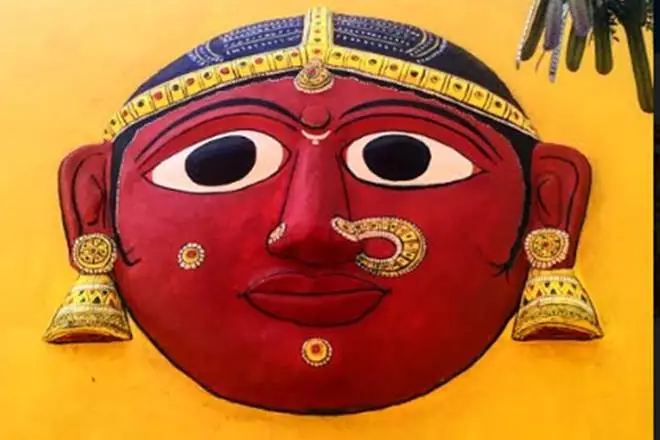
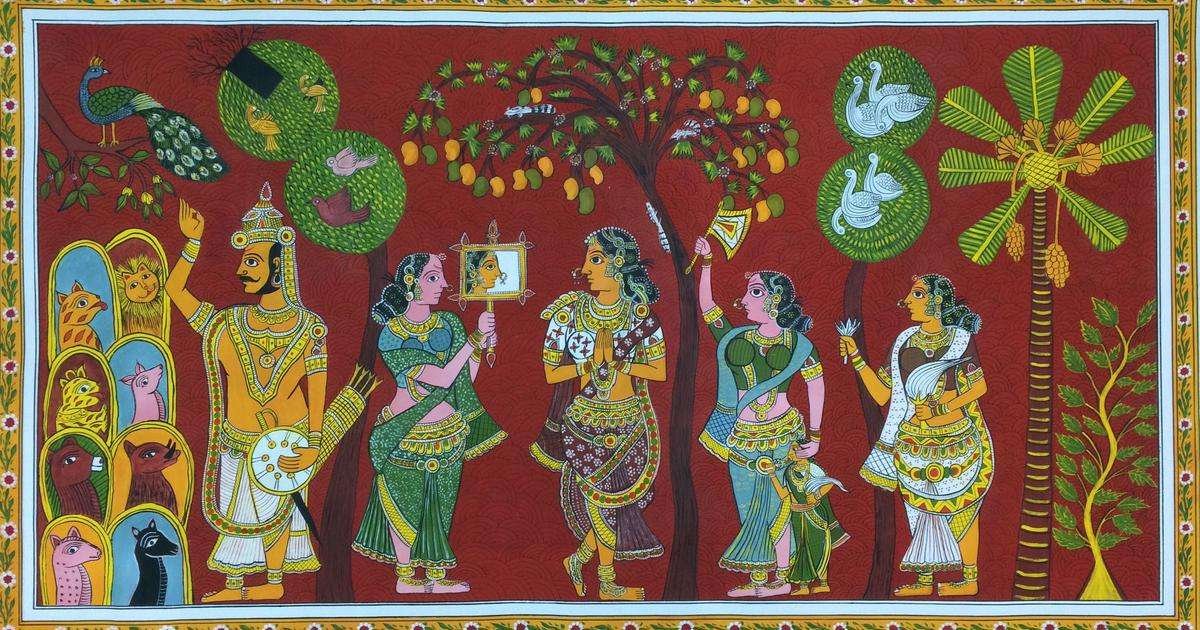
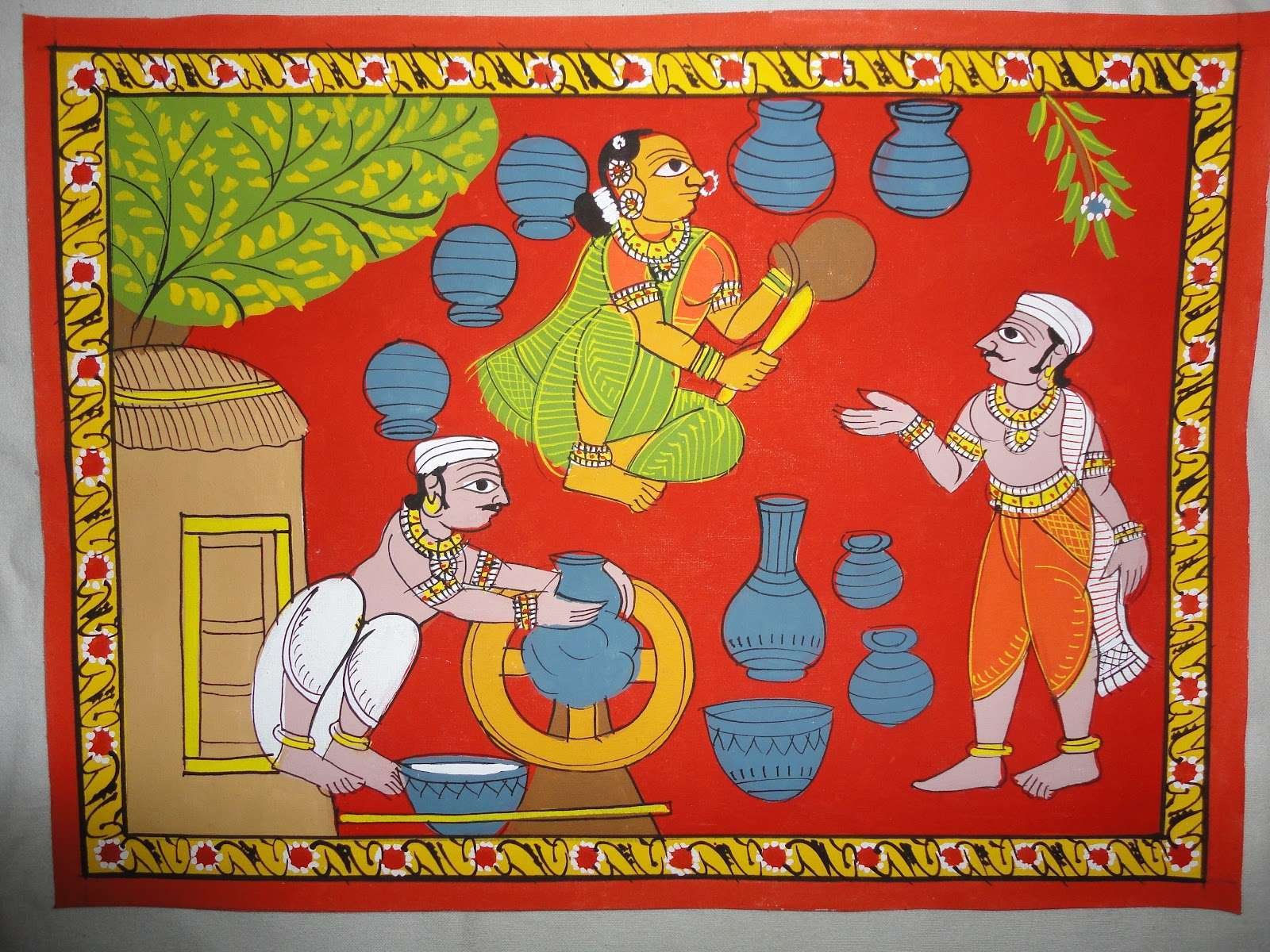
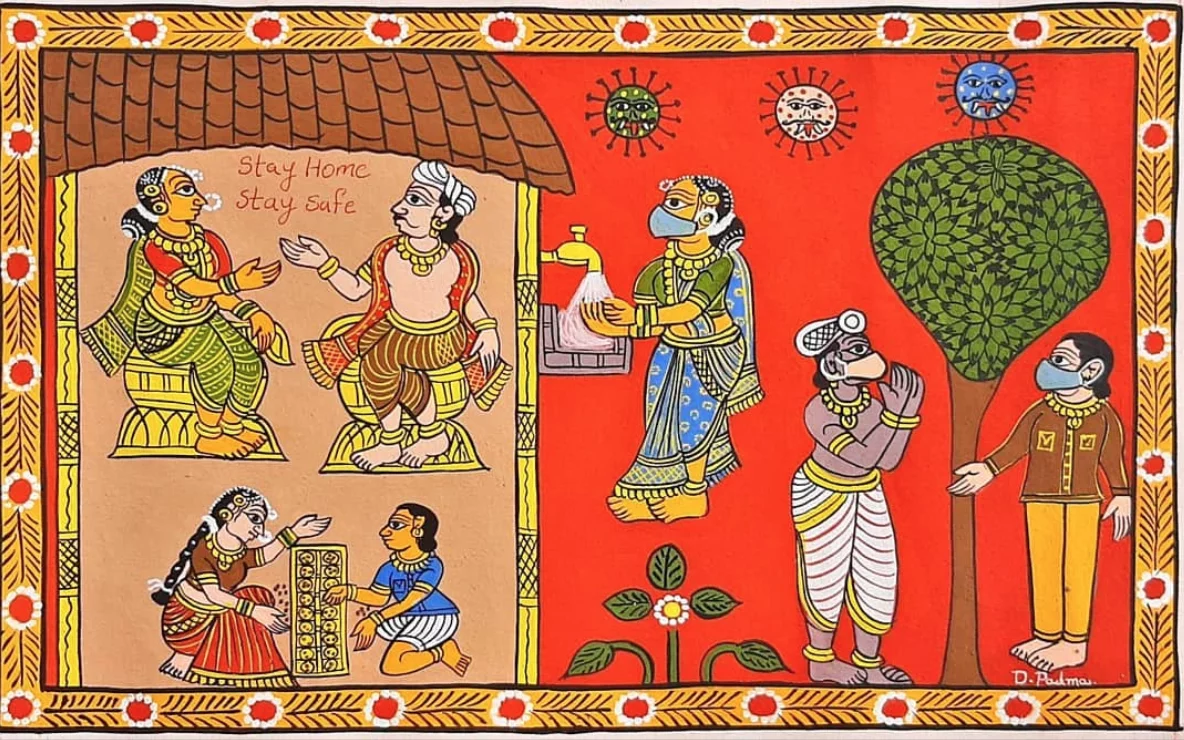
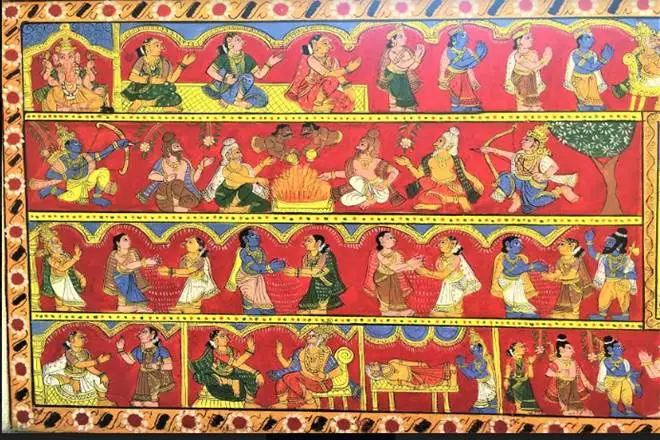
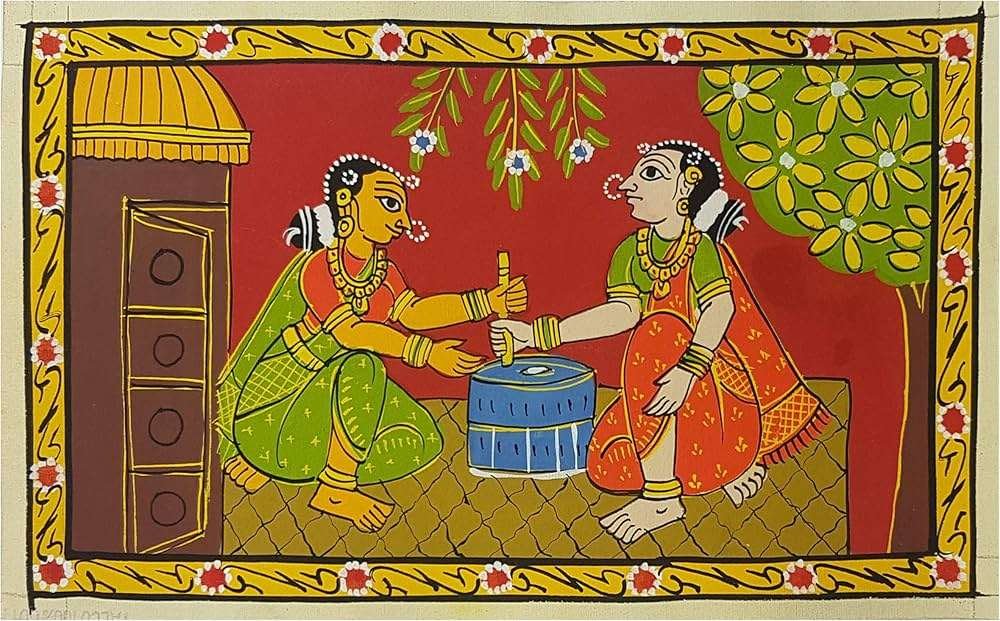
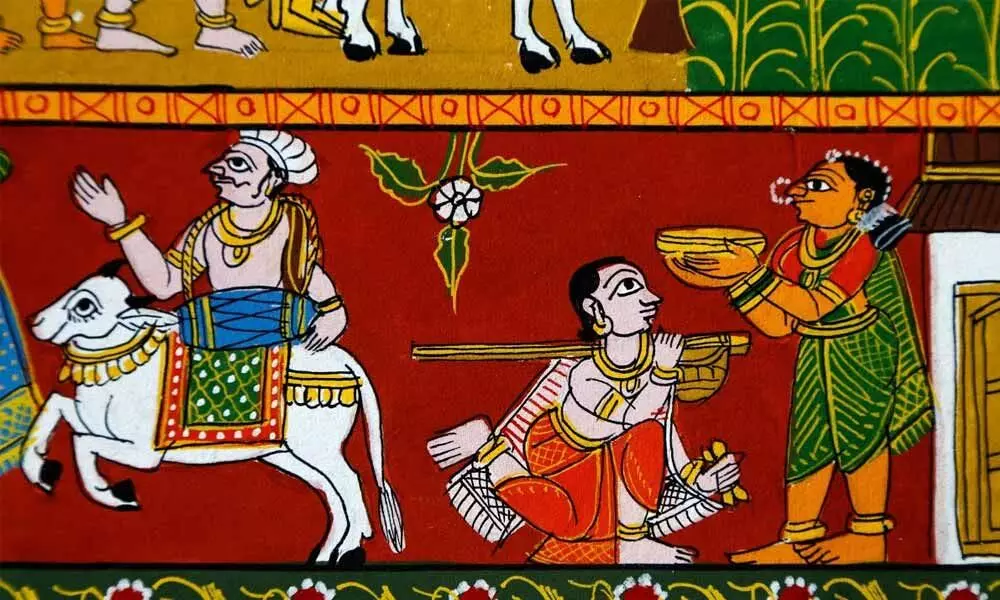
Leave a Reply